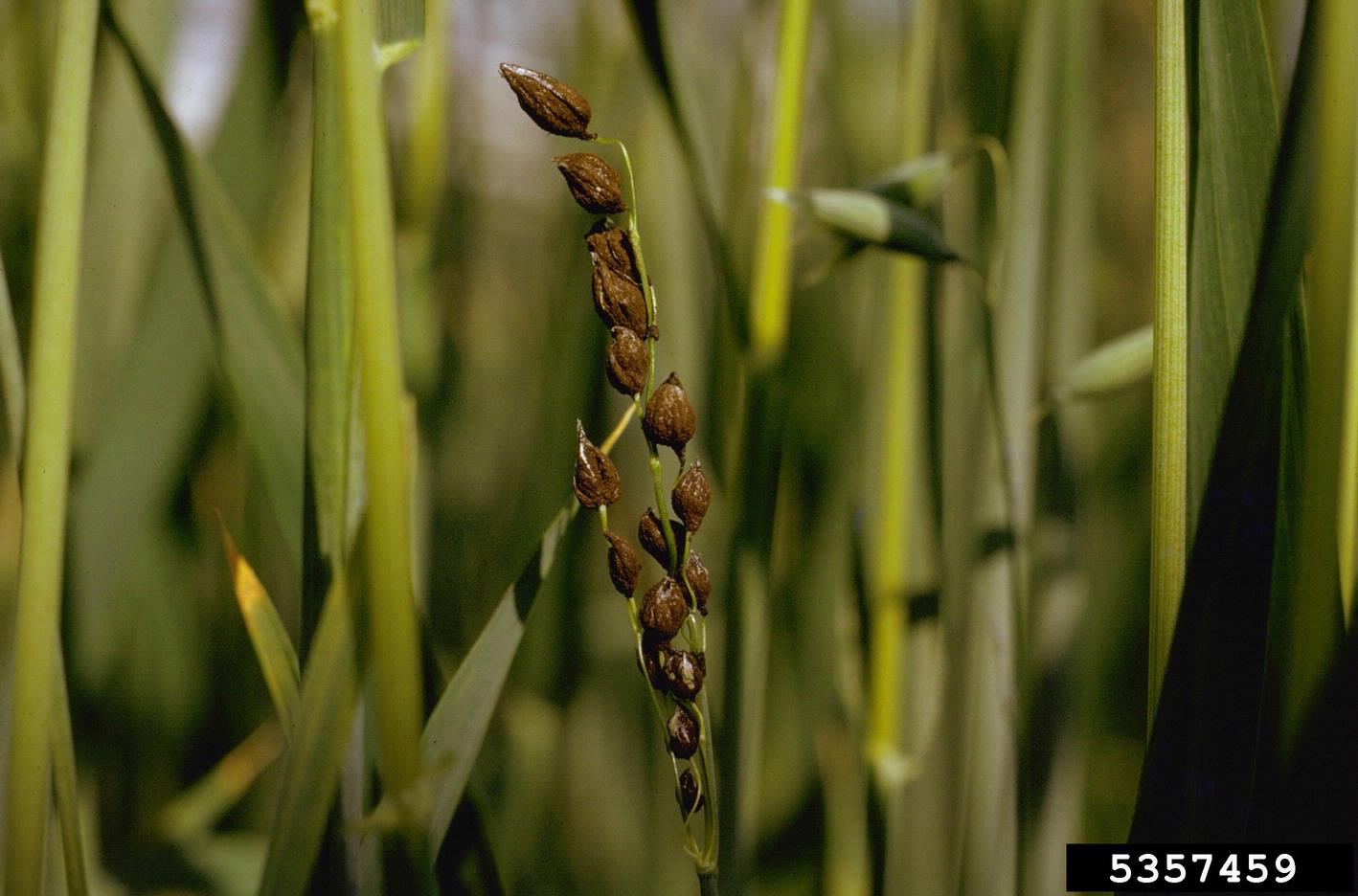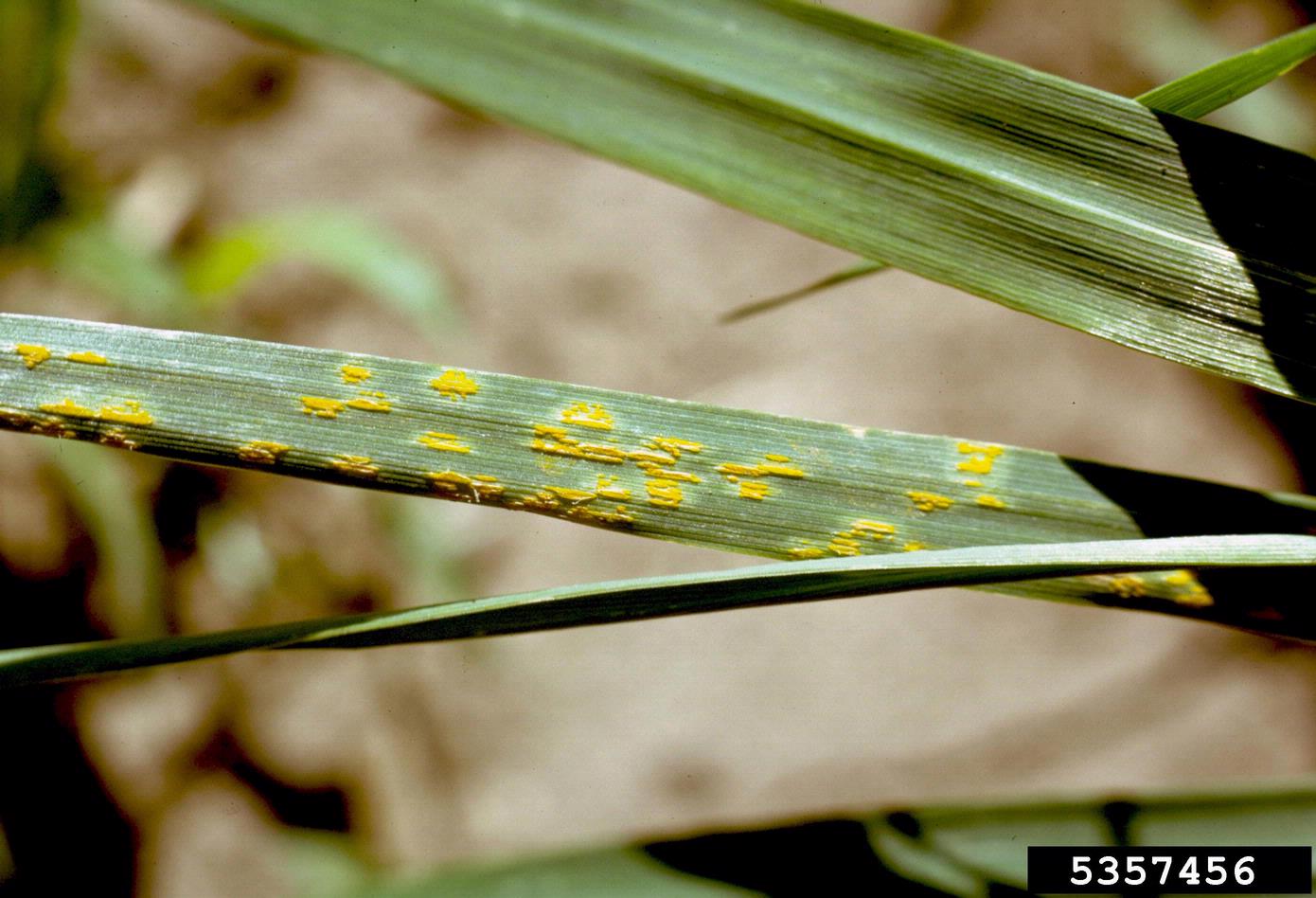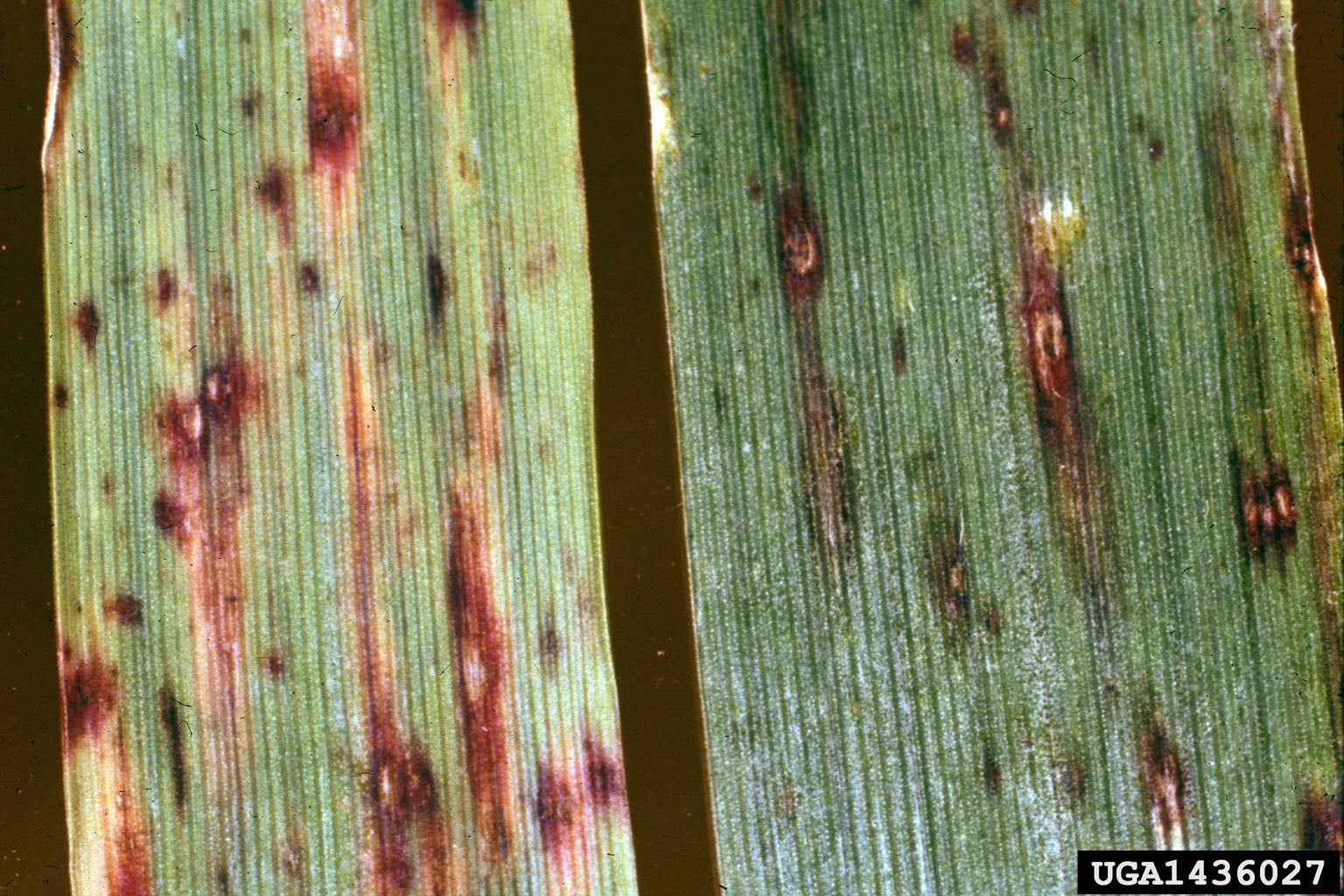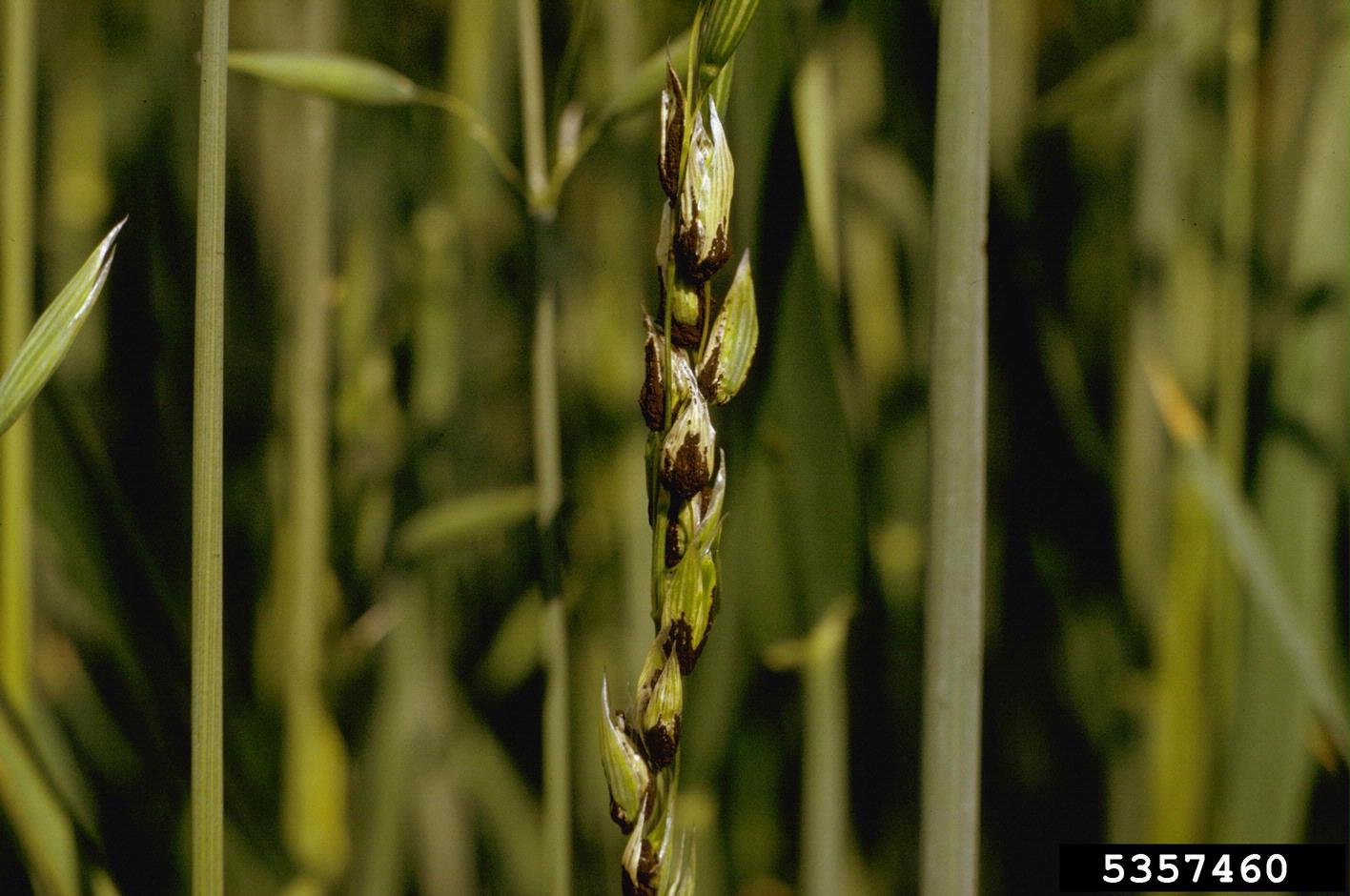Oats Loose Smut Control – What Causes Oat Loose Smut Disease


Loose smut of oats is a fungal disease that damages various types of small, grain cereal crops. Different fungi affect different crops and are usually host-specific. If you grow cereal crops, it’s good to understand the basics about loose smut of oats in order to prevent it. Read on for information about what causes oat loose smut, as well as tips on oats loose smut control.
Oats Loose Smut Info
Loose smut of oats is caused by the fungus Ustilago avenae. You are likely to find this disease almost everywhere oats are grown. Related species of Ustilago attack barley, wheat, corn, and other cereal grasses.
The term “smut” is a descriptive one, referencing the appearance of the black spores typical of oats with loose smut. According to oats loose smut information, the fungal spores enter and infect the oat seed kernels. They are visible on the seed heads that look gray and smutty.
What Causes Oat Loose Smut?
The fungal pathogen causing oats with loose smut is transmitted through infected seeds. It lives from season to season inside the embryo of the seed. Infected seeds look normal and you cannot tell them from healthy seeds.
Once the infected seeds germinate, however, the fungus is activated and infects the seedling, usually when the weather is cool and wet. As flowers start to form, the oat seeds are replaced with the black, powdery spores of the fungus. The infected oat heads usually emerge early and spores are blown from one plant to others nearby.
Oats Loose Smut Control
Anyone growing oats will want to find out about effective oats loose smut control. What can you do to prevent this fungus from attacking your crops?
You can control this disease by treating the seed with systemic fungicides. Don’t rely on contact fungicides to treat oats with loose smut since the fungus causing it is inside the seed. Carboxin (Vitavax) is one that works.
Gardening tips, videos, info and more delivered right to your inbox!
Sign up for the Gardening Know How newsletter today and receive a free copy of our e-book "How to Grow Delicious Tomatoes".
You should also take care to use oat seed that is clean and healthy, completely free of the fungus. Grain varieties are available that are resistant to loose smut of oats, and these are a great idea as well.

Teo Spengler is a master gardener and a docent at the San Francisco Botanical Garden, where she hosts public tours. She has studied horticulture and written about nature, trees, plants, and gardening for more than two decades. Her extended family includes some 30 houseplants and hundreds of outdoor plants, including 250 trees, which are her main passion. Spengler currently splits her life between San Francisco and the French Basque Country, though she was raised in Alaska, giving her experience of gardening in a range of climates.
-
 Looking For Plants To Give You The Soft And Fuzzies? Try These 5 Fuzzy Leaf Plant Options
Looking For Plants To Give You The Soft And Fuzzies? Try These 5 Fuzzy Leaf Plant OptionsLovers of texture, drama, silver foliage and tactile plants will adore these special sensory garden additions. These fuzzy leaf plant options will leave you all aglow
By Susan Albert
-
 Get Ready For A Summer Of Hummers! Grow These Full Sun Hummingbird Plants and Flowers
Get Ready For A Summer Of Hummers! Grow These Full Sun Hummingbird Plants and FlowersIf you’re lucky enough to enjoy a sunny backyard, make sure you are maxing out on your pollinator opportunities and grow these full sun hummingbird plants and flowers
By Tonya Barnett
-
 Oat Rust Control: Treating Oats With Crown Rust
Oat Rust Control: Treating Oats With Crown RustCrown rust is the most widespread and damaging disease found in oats. For individual growers, oats with crown rust can result in a total crop loss. Click here to learn more about control and treatment of oat rust.
By Amy Grant
-
Barley Yellow Dwarf Virus In Oats – Treating Oats With Barley Yellow Dwarf
If you grow oats, barley, or wheat on your small farm or backyard garden, you need to know about barley yellow dwarf virus. This is a damaging disease that can cause losses of up to 25 percent. Know the signs and what you can do to in this article.
By Mary Ellen Ellis
-
Victoria Blight In Oats – Learn To Treat Oats With Victoria Blight
Victoria blight in oats once reached epidemic proportions. As a result, many oat cultivars that have proven to be resistant to crown rust are susceptible to Victoria blight of oats. Learn about the signs and symptoms of oats with Victoria blight in this article.
By Mary H. Dyer
-
 Oat Leaf Blotch Info: Recognizing Symptoms Of Oat Leaf Blotch
Oat Leaf Blotch Info: Recognizing Symptoms Of Oat Leaf BlotchCrop losses of as much as 15 percent have been reported from leaf blotch of oats. While this isn't a huge number, in commercial settings and in smaller fields, the impact is significant. However, oat leaf blotch control is possible. Click this article to learn more.
By Bonnie L. Grant
-
 Oat Covered Smut Control – Treating Oats With Covered Smut Disease
Oat Covered Smut Control – Treating Oats With Covered Smut DiseaseSmut is a fungal disease that attacks oat plants. There are two kinds of smut: loose smut and covered smut. If you are growing oats, you probably need oats covered smut information. Learn about oats with covered smut and tips on oat covered smut control here.
By Teo Spengler
-
Oats With Powdery Mildew – How To Treat Powdery Mildew On Oats
While powdery mildew on oats isn’t the worst thing that can happen, it can markedly diminish crop quality and yield. Unfortunately, there isn’t a lot that growers can do about the pesky fungal disease. Click this article to learn more.
By Mary H. Dyer
-
Halo Bacterial Blight Control – Treating Halo Blight In Oats
Halo blight in oats is a common, but nonlethal, bacterial disease that afflicts oats. The following oats halo blight info discusses the symptoms of oats with halo blight and management of the disease. Click here for more information.
By Amy Grant
-
 Stem Rust Of Oat Crops – Tips On Treating Oat Stem Rust Disease
Stem Rust Of Oat Crops – Tips On Treating Oat Stem Rust DiseaseBy Tonya Barnett